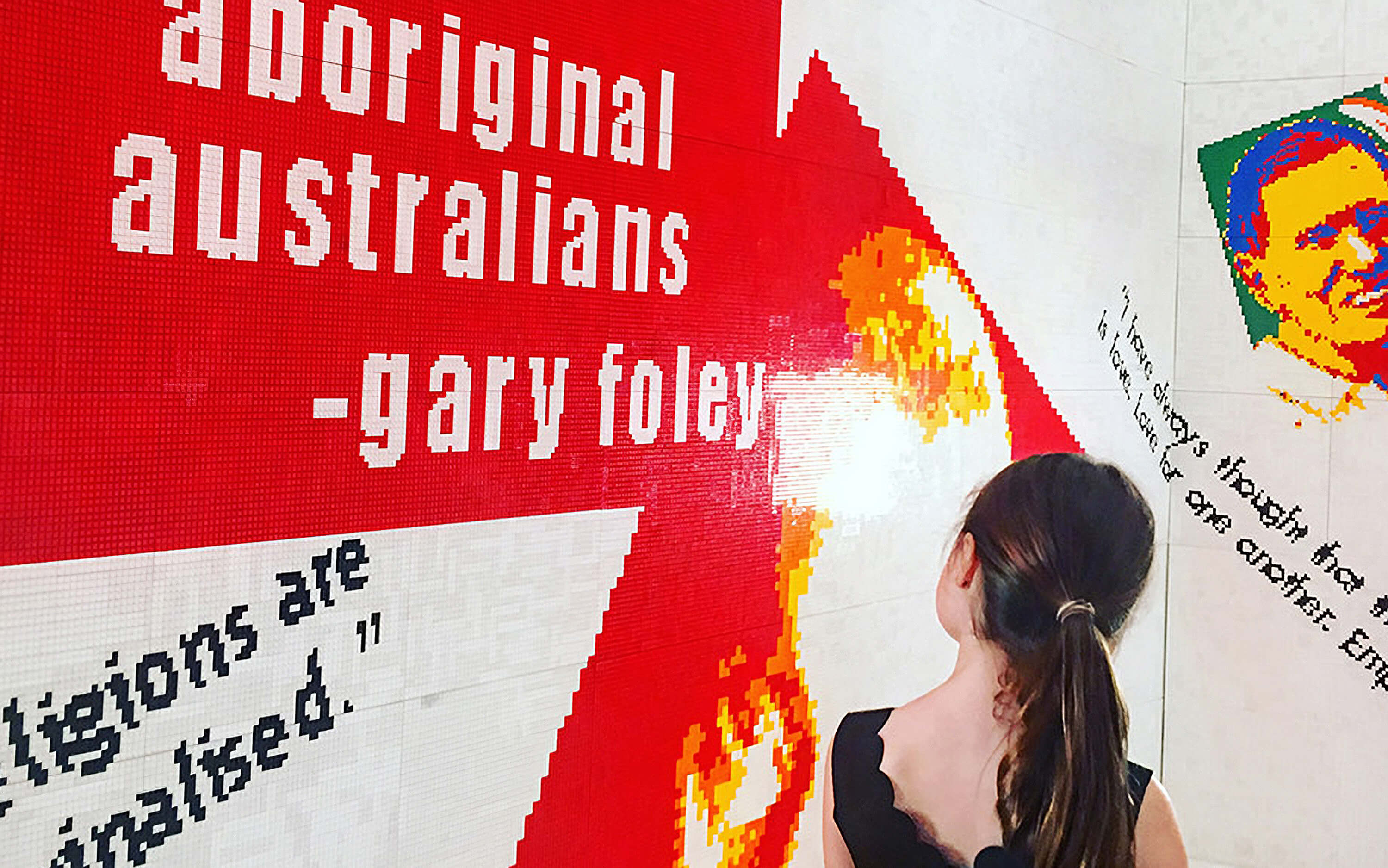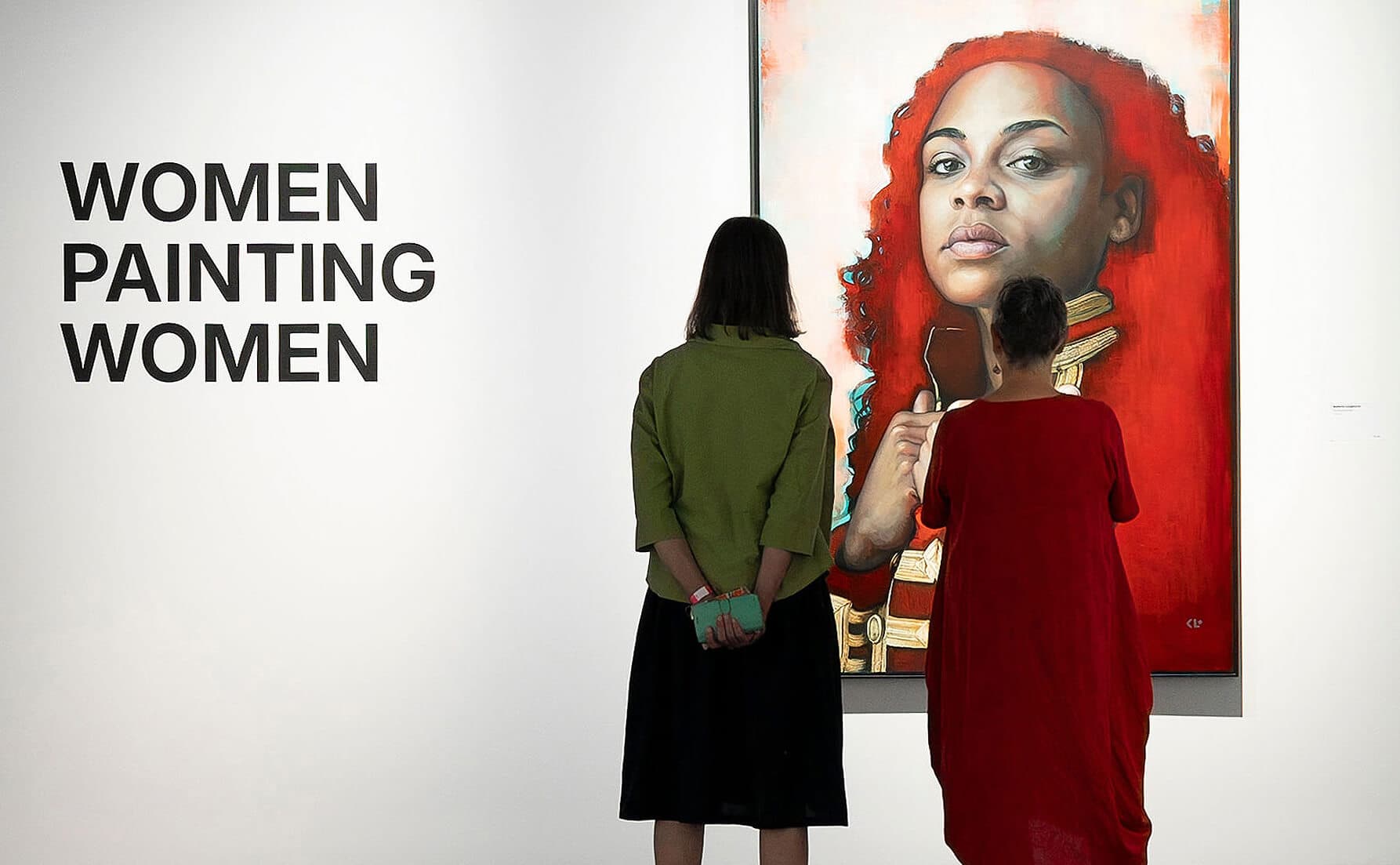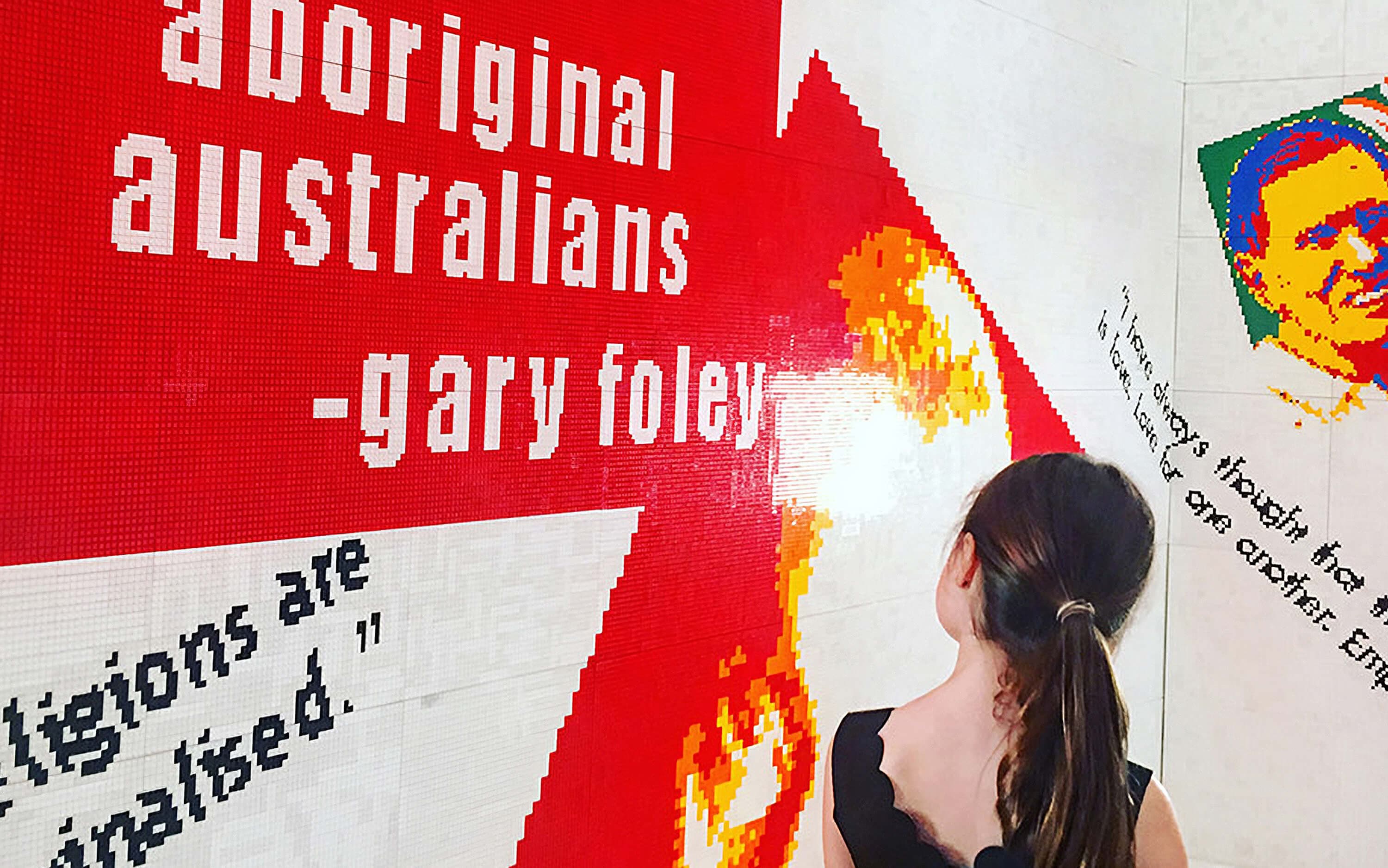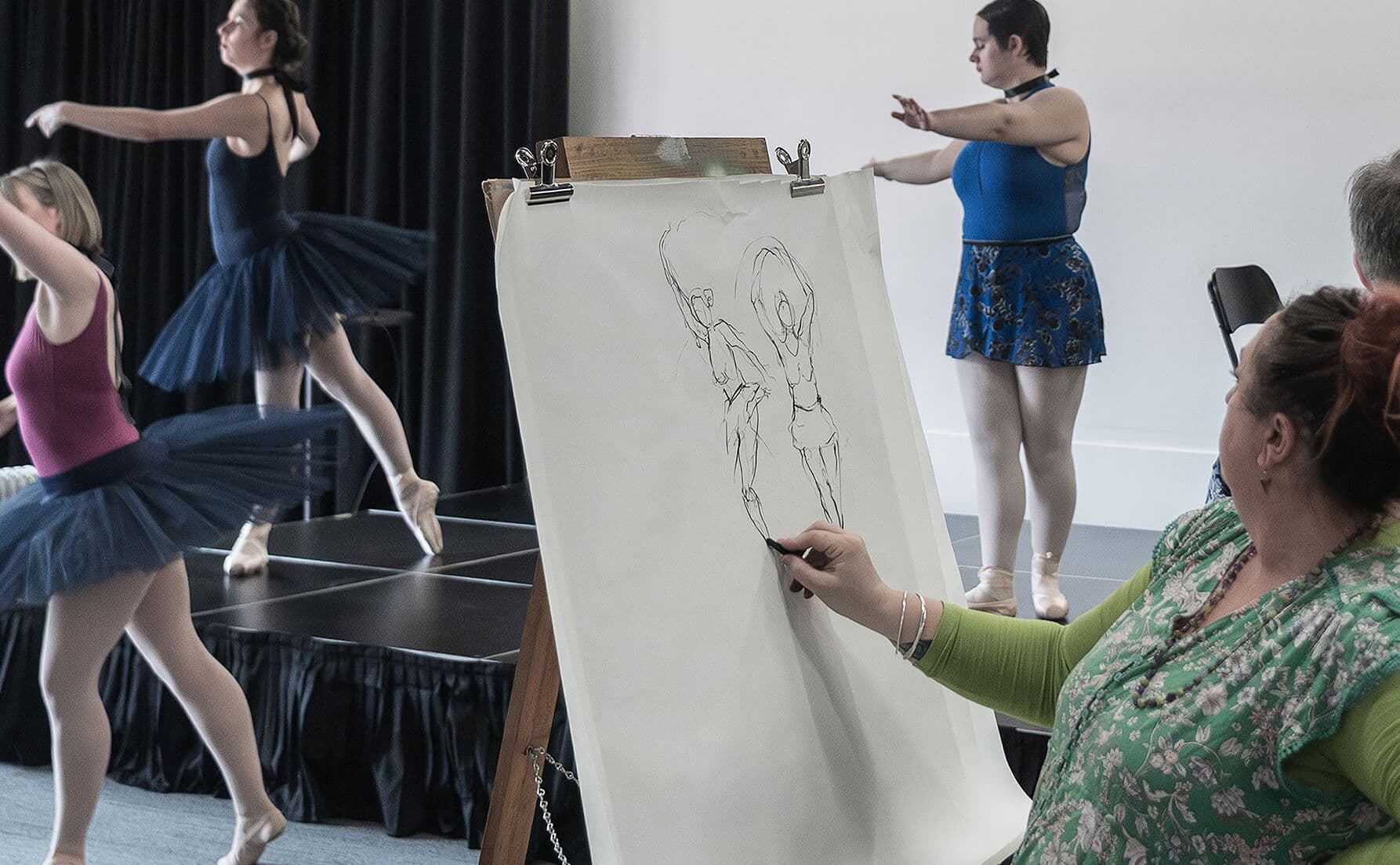


Cultural centres and art museums serve as vital spaces where imagination flourishes, perspectives shift, and meaningful connections form.
These institutions aren't just buildings housing pretty objects – they're catalysts for personal growth, social change, and community building.

Art creates a unique space for imagination, reflection, and most importantly, change.
Through creative expression, cultural centres bring critical topics like sustainability and equality into mainstream conversations. They provide platforms where artists can challenge societal norms, spark debates, and inspire action on issues that matter.
Australian research consistently shows that communities with strong arts engagement experience higher levels of social cohesion, civic participation, and mental wellbeing. Creative Australia has found that people who participate in the arts are more likely to feel proud of their local community and report a stronger sense of belonging. Their research reveals that 84% of Australians believe the arts make for a richer and more meaningful life, while communities with active cultural centres demonstrate increased property values and reduced crime rates.
A comprehensive study by the University of Western Sydney highlighted that investment in local arts facilities correlates with increased economic vitality and reduced social isolation. The research showed that every dollar invested in community arts programs generates approximately $4 in social and economic returns, proving that cultural investment benefits entire communities.
A comprehensive study by the University of Western Sydney highlighted that investment in local arts facilities correlates with increased economic vitality and reduced social isolation.
Children who regularly engage with art develop stronger social and emotional skills alongside a deeper appreciation for the world around them. Art encourages creativity while nurturing passions that can last a lifetime. When young people attend exhibitions and hear the stories behind artworks, they gain perspectives that textbooks simply cannot provide.
At cultural centres like Burrinja, educators understand this impact. They actively encourage young visitors to explore exhibitions and discover the narratives woven into each piece. Many visitors later reflect that discovering art at a young age shaped their entire worldview. Most express profound gratitude toward the adults who provided these early cultural experiences – attending exhibitions, plays, and museum visits.
Research from the Australian Institute of Family Studies found that children who participate in arts activities show improved academic performance, better social skills, and enhanced emotional regulation. The study tracked over 2,000 Australian children and found those with regular arts exposure scored 15% higher on creativity assessments and demonstrated greater resilience when facing challenges.
Lola Leeves from Launching Place shares her transformative experience: "As a child, my aunty took me to my first exhibition at the NGV featuring Andy Warhol and Ai Weiwei. I was 7 at the time. I remember walking around thinking this is amazing. There were paintings, sculptures including this room made of Lego that I could walk into. I had never seen anything like this before."
Now 17, Lola continues this tradition with her aunt. "My aunty and I still go to exhibitions. I get a kick out of going through her phone and seeing the photos of me out the front of galleries over the years. It's become a tradition and I know I plan on keeping it going."
This story illustrates how a single cultural experience can create lifelong bonds and inspire continued engagement with the arts. It demonstrates the ripple effect of cultural access – one exhibition visit at age 7 became a decade-long tradition that will likely continue for generations.

While the internet has made art more accessible than ever, digital viewing cannot replace the physical experience of standing before an artwork. Recent Australian studies demonstrate the positive psychological and emotional effects of engaging with art in person compared to viewing it on screens.
The Australia Council for the Arts conducted extensive research showing that Australians who experience live art consistently report increased feelings of happiness, reduced stress levels, and a greater sense of community connection. Their 2019 study found that 73% of people who attended live cultural events reported feeling more optimistic about life, while only 34% of those who consumed art digitally experienced similar benefits.
When you stand in front of a painting, you notice brushstrokes invisible in photographs. Sculptures reveal their true scale and texture only when experienced physically. Performance art creates shared energy between artists and audiences that no livestream can capture. The spatial relationships between artworks, the lighting, the acoustics – these elements combine to create immersive experiences that engage all senses.
Research from Deakin University tracked school students who participated in excursions to art museums and galleries across Victoria. The study found these students demonstrated improved critical thinking skills, increased historical empathy, and greater cultural awareness compared to peers who only accessed art through digital means. Most significantly, the research showed that a single museum visit could improve students' academic performance across multiple subjects for up to six months.
Beyond exhibitions, cultural centres serve as vital community hubs. They facilitate workshops for all ages and abilities, providing safe environments where people connect while creating. These programs address social isolation and loneliness by giving participants both creative outlets and social interactions.
For many community members, cultural centres offer their first opportunity to try new art forms without judgment. Adult painting classes, pottery workshops, creative writing groups, and community theatre productions welcome beginners alongside experienced artists. This inclusive approach breaks down barriers that might prevent people from engaging with the arts.
The Australian Bureau of Statistics reports that Australians who participate in community arts activities are 40% less likely to experience depression and anxiety. VicHealth research further reinforces this, showing that creative participation helps combat loneliness, builds resilience, and strengthens social networks in local neighbourhoods.
Cultural centres create environments where individuals can express themselves authentically. Whether through visual arts, performing arts, or literary arts, these venues provide stages and canvases for personal stories. This expression serves therapeutic functions while contributing to broader cultural conversations.
Many participants discover hidden talents or develop new passions through community programs. Others find healing through creative expression, processing experiences and emotions in supportive environments. The social connections formed in these settings often extend beyond program hours, creating lasting friendships and support networks.
A longitudinal study by Griffith University followed participants in community arts programs across Queensland for three years. The research found that 89% of participants reported improved mental health, while 76% developed new friendships through these programs. Perhaps most remarkably, 63% went on to volunteer in their communities, creating a positive cycle of civic engagement.
Museums and galleries offer rich encounters with reality, preserving objects from the past while illuminating possibilities for the future. Their primary purpose involves collecting and preserving evidence of human achievement and natural world phenomena, then using these collections to enhance knowledge and understanding.
These institutions serve as bridges between generations, connecting contemporary audiences with historical contexts. A convict-era artifact from Sydney's Hyde Park Barracks tells stories that history textbooks cannot convey. Aboriginal artwork reveals cultural knowledge that written records miss. Contemporary installations challenge viewers to consider future possibilities for Australian society.
Museums Australia reports that Australian museums collectively house over 20 million objects, making cultural heritage accessible to millions of visitors annually. This accessibility ensures that cultural treasures belong to everyone, not just privileged classes.

Exhibitions and visual arts performances often provide more effective history lessons than traditional textbooks. Visual elements engage audiences in ways that words alone cannot achieve. When visitors see artifacts from Australia's colonial period or artistic interpretations of social movements, they develop deeper emotional connections to these subjects.
Interactive exhibitions further enhance learning by inviting participation. Hands-on activities help visitors understand artistic techniques, historical contexts, and cultural significance. These multisensory experiences create memorable learning moments that persist long after visits end.
The Australian Association for Research in Education found that students who participated in museum-based learning programs showed 25% better retention of historical facts compared to classroom-only learning. The study emphasized that visual and tactile experiences create stronger neural pathways for memory formation.
Cultural centres play crucial roles in preserving and celebrating local identities. They showcase regional artists, document community histories, and provide venues for cultural celebrations. This focus helps residents understand their unique heritage while fostering pride in local achievements.
For immigrant communities, cultural centres often serve as bridges between traditional cultures and new Australian homes. They provide spaces where cultural practices continue while adapting to contemporary contexts. These institutions help maintain Australia's cultural diversity while promoting understanding across different groups.
The Australian Multicultural Foundation found that communities with active cultural centres report 45% higher levels of intercultural understanding and 30% lower incidents of social tension. These spaces become vital meeting points where different cultures can share traditions and build mutual respect.
Australia faces significant mental health challenges, with Beyond Blue reporting that one in four Australians experience anxiety or depression annually. Cultural centres and museums offer powerful therapeutic benefits that complement traditional mental health services.
The Australia Council for the Arts partnered with the Black Dog Institute to study arts participation and mental wellness. Their research found that regular engagement with cultural activities reduces symptoms of depression by an average of 32% and anxiety by 28%. The study particularly highlighted the benefits of group arts activities, which provide both creative expression and social connection.
Art therapy programs in Australian cultural centres have shown remarkable success rates. The Royal Australian and New Zealand College of Psychiatrists recognizes creative arts as an effective complementary treatment for various mental health conditions. These programs offer non-verbal ways to process trauma, express emotions, and build coping strategies.
Australian cultural centres and museums contribute significantly to local economies. A study by the Cultural Development Network found that every person employed in the arts and cultural sector generates an additional 1.7 jobs in other industries. The cultural sector contributes approximately $12 billion annually to Australia's GDP.
Tourism Research Australia data reveals that cultural tourism generates over $4.2 billion in visitor expenditure annually. International visitors who engage with Australian cultural institutions stay longer and spend more money, contributing to sustainable tourism growth.
Regional areas particularly benefit from cultural investment. The Regional Arts Australia research shows that small towns with active cultural centres attract 23% more tourists and experience 18% higher business turnover. These institutions become anchor points for broader economic revitalization.
While emphasising the irreplaceable value of in-person experiences, Australian cultural institutions are thoughtfully incorporating technology to enhance visitor engagement. The Australian Museum and National Gallery of Australia lead innovative approaches that complement rather than replace physical experiences.
Virtual reality installations allow visitors to explore archaeological sites or experience historical events. Augmented reality apps provide additional context for exhibitions without disrupting the contemplative museum atmosphere. These technologies serve as bridges to deeper engagement rather than substitutes for real experiences.
A study by the Queensland University of Technology found that museums using integrated digital experiences see 35% longer visitor stays and 42% higher return visit rates. The key lies in using technology to enhance rather than dominate the cultural experience.
As Australia becomes increasingly urbanized, the need for accessible cultural spaces grows more critical. The Australia Council for the Arts projects that demand for cultural participation will increase by 40% over the next decade, driven by population growth and increased recognition of arts benefits.
Cultural centres must continue evolving to meet changing community needs while maintaining their core missions. This might involve expanding accessibility programs, addressing contemporary social issues through programming, or developing new partnerships with health and education sectors. The goal remains constant: providing meaningful cultural experiences that enrich lives and strengthen communities.
Recent government initiatives, including the Creative Economy Package and Regional Arts Fund, demonstrate growing recognition of cultural centres' importance. These investments support infrastructure development, program innovation, and community engagement initiatives across Australia.
Burrinja Cultural Centre exemplifies these principles in action. The organization lives and breathes art while proudly hosting events that celebrate, question, and challenge life and the world we inhabit. Through diverse programming and community engagement, Burrinja demonstrates how cultural centres can serve as catalysts for positive change.
Their commitment extends beyond entertainment to encompass education, community building, and social justice. By providing platforms for diverse voices and perspectives, Burrinja helps create more inclusive and understanding communities. Their programs consistently reflect the research findings discussed throughout this post – fostering creativity, building connections, and improving community wellbeing.
Cultural centres and art museums remain essential community assets that nurture creativity, preserve heritage, facilitate learning, and bring people together across differences. Australian research consistently demonstrates their positive impact on mental health, educational outcomes, social cohesion, and economic vitality.
In an increasingly divided world, these institutions remind us of our shared humanity while celebrating the beautiful diversity of human expression. Every Australian community deserves access to these transformative spaces, and supporting them ensures that future generations can continue discovering the magic that Lola experienced at age 7 – the magic that changes lives forever.
The evidence is clear: cultural centres and art museums aren't luxuries but necessities for thriving communities. They provide irreplaceable benefits that no digital alternative can match, creating spaces where imagination flourishes, connections form, and positive change begins. As Australia continues growing and evolving, these institutions will remain vital foundations for building stronger, more creative, and more connected communities.
Kinnear Miller – Marketing Manager